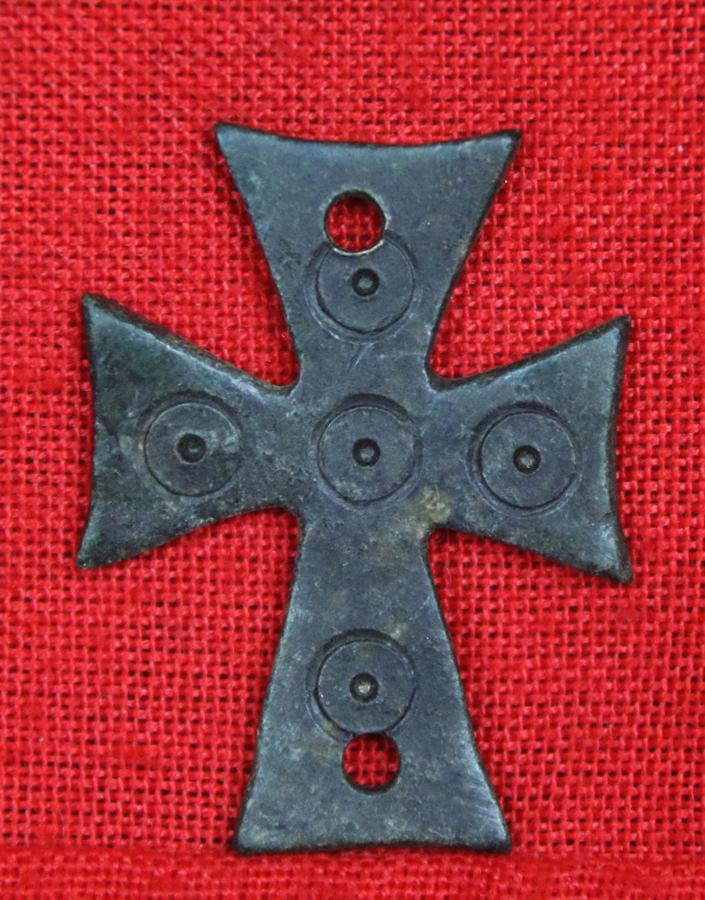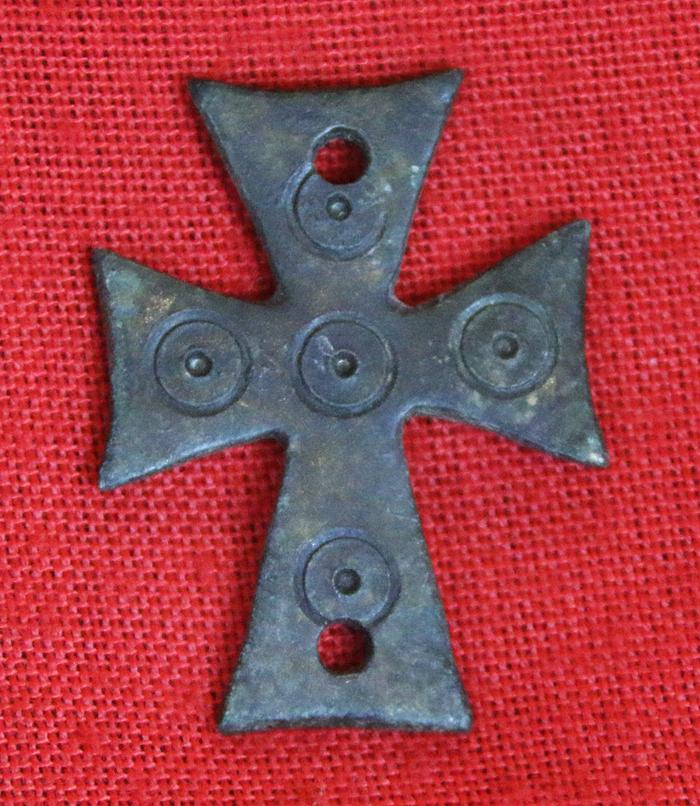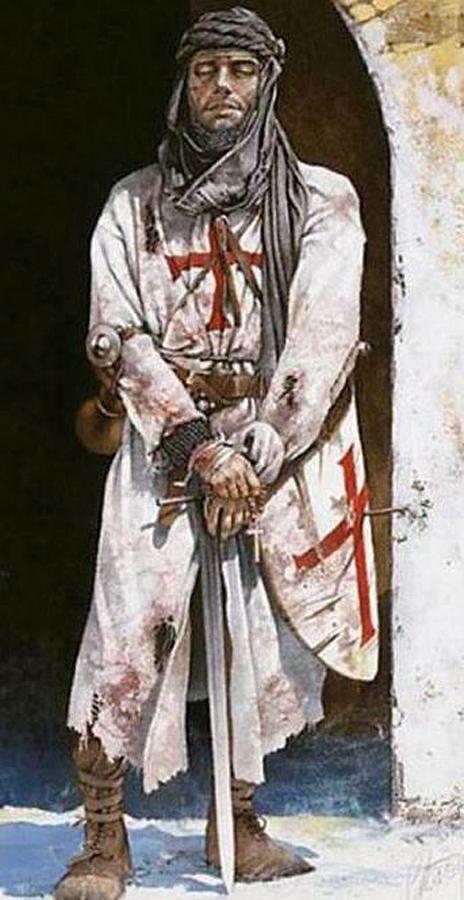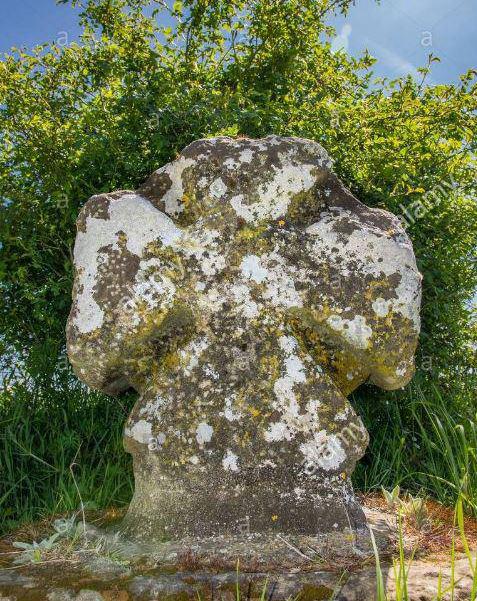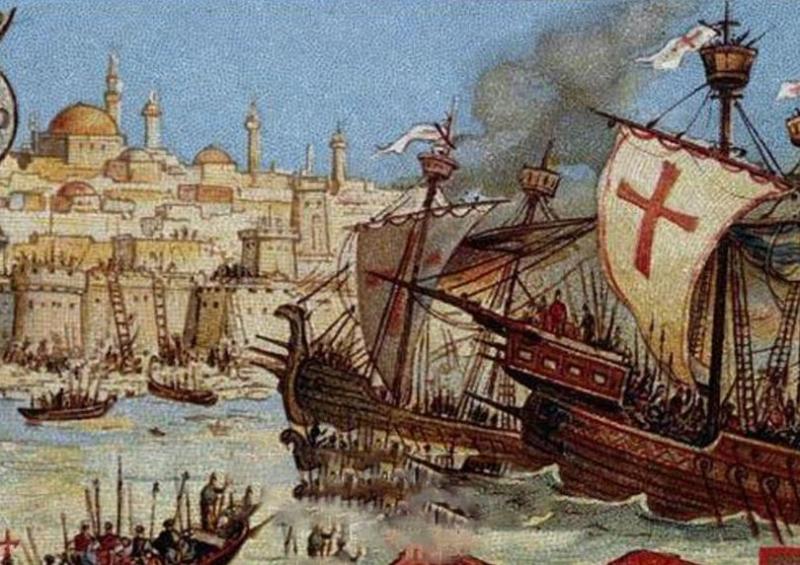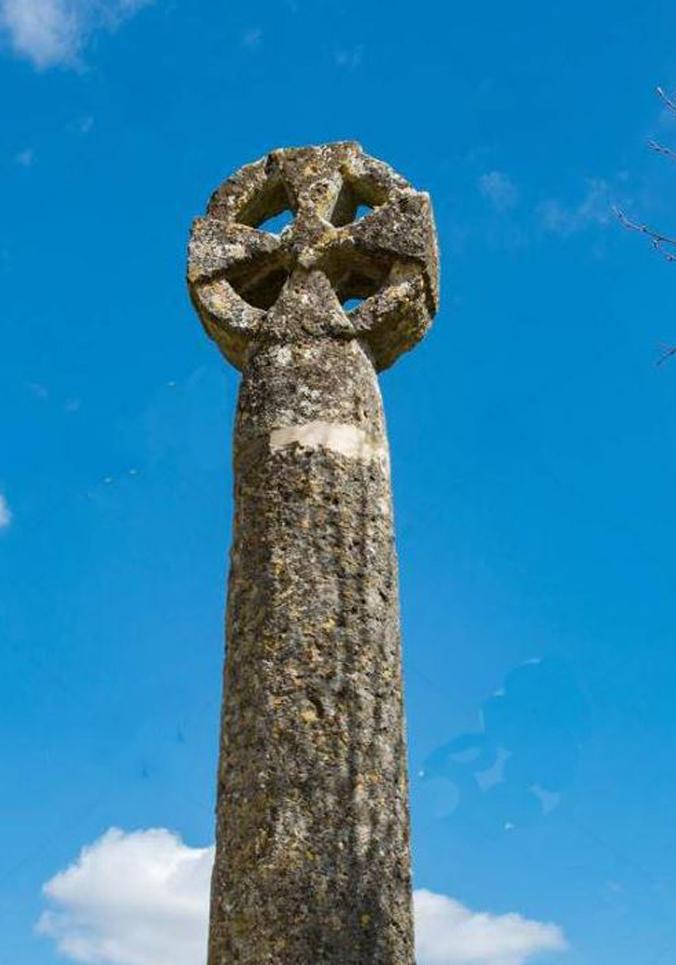Original, 11th 12th Century Bronze Knights Templar Christian Cross Patee {Formee}
Original, Knights Templar cross pattee formee from our part four of our original ancient arrow heads, spears, lead sling bullets, antiquities and rings from an 1820 Grand Tour classical collection from Europe and the Middle East. Very likely, a so called ‘Warrior of Christ’, such as the Knight's Templar and Knight’s of St John of Jerusalem. After the fall of the Kingdom of Jerusalem in 1291 (the city of Jerusalem had fallen in 1187), the Knights of St, John were confined to the County of Tripoli and, when Acre was captured in 1291, the order sought refuge in the Kingdom of Cyprus. Finding themselves becoming enmeshed in Cypriot politics, their Master, Guillaume de Villaret, created a plan of acquiring their own temporal domain, selecting Rhodes to be their new home, part of the Byzantine empire. His successor, Foulques de Villaret, executed the plan, and on 15 August 1310, after more than four years of campaigning, the city of Rhodes surrendered to the knights. They also gained control of a number of neighbouring islands and the Anatolian port of Halicarnassus and the island of Kastellorizo.
Pope Clement V dissolved the Hospitallers' rival order, the Knights Templar, in 1312 with a series of papal bulls, including the Ad providam bull that turned over much of their property to the Hospitallers.
The holdings were organised into eight "Tongues" or Langues, one each in Crown of Aragon, Auvergne, Crown of Castile, Kingdom of England, France, Holy Roman Empire, Italy and Provence. Each was administered by a Prior or, if there was more than one priory in the langue, by a Grand Prior.
At Rhodes, and later Malta, the resident knights of each langue were headed by a baili. The English Grand Prior at the time was Philip De Thame, who acquired the estates allocated to the English langue from 1330 to 1358. In 1334, the Knights of Rhodes defeated Andronicus and his Turkish auxiliaries. In the 14th century, there were several other battles in which they fought.
In 1374, the Knights took over the defence of Smyrna, conquered by a crusade in 1344. They held it until it was besieged and taken by Timur in 1402.
On Rhodes the Hospitallers, by then also referred to as the Knights of Rhodes, were forced to become a more militarized force, fighting especially with the Barbary pirates. They withstood two invasions in the 15th century, one by the Sultan of Egypt in 1444 and another by the Ottoman Sultan Mehmed the Conqueror in 1480 who, after capturing Constantinople and defeating the Byzantine Empire in 1453, made the Knights a priority target .Good condition for age, with superbly well surviving armourers stamps. Early Christian Knight’s symbols of crucifixes symbols, and variations, can be still be seen chiselled into stone in the numerous remains of Templar Knights or Christian knight’s castle sites in the Holy Land, the Mediterranean and France.
Two photos in the gallery of two of the same Templar carved stone cross pattee, in France, from the 11th to 13th century. France, Val d'Oise, Omerville, croix pattée, monolithic cross,carved from limestone, dating from the 11th to the 13th century. France,Val d'Oise,Villers-en-Arthies,Croix du Gros Poirier, croix pattée,monolithic cross,carved from limestone,dating from the 11th to the 13th century As with all our items it comes complete with our certificate of authenticity. 4 cm by 3 cm.
Code: 24029

